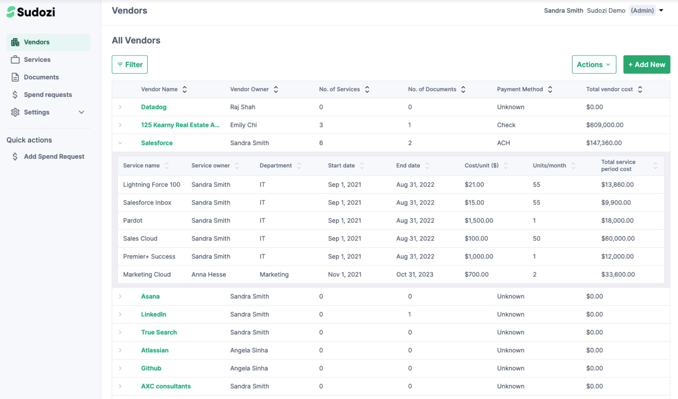.png)
8 Finance Leaders Share Practical Tips for Reducing Headcount and Vendors
From the New Series “Driving Smart Growth”
Welcome to the fourth installment of Driving Smart Growth–insights for finance leaders on making tough decisions in f*cked up markets 😅. If you missed the first post, you can read Post One: How Finance Leaders are Re-evaluating their Financial Models for crazy times, Post Two: Avoiding WTF!? How to Establish Effective BvA Cadences, and Post three: Three Practical Tips for Effective Spend Request Workflows. If you want the full guide, subscribe below.
When sh*t gets real, even the best teams may need to look for places to cut spend.
As a finance leader, this is your time to shine. It’s an opportunity to flex your strategic muscle and help guide leadership through what can be a very difficult, and fraught process. So where to begin? Here we share our learnings from interviews with 8 top finance leaders.
Start by Identifying Goals
When the directive comes from the board or leadership to cut spend, the strategy usually sounds something like “spend less and be more efficient!”
Just ‘spend less’ is not a strategy
As finance leaders we know that “spend less” does not make a strategy. First thing is to circle up the team and align on go forward goals:
- Are we trying to achieve a near term revenue goal?
- Are we trying to achieve profitability?
- Are we trying to get our runway out to a minimum number of months?
With clarity around the ‘what’ and the ‘why’ you can then proceed to evaluate the ‘how’.
Which brings us to step two.
Get the Data
Whatever your strategy, you can’t make effective decisions on what to cut without the data. Leaders tell us they’re gathering the following:
- Vendors: Create a list of all vendors you’re actively engaged with from consultants to saas software to leases. You’ll need details about any contractual obligations, renewal dates, and cost drivers for each vendor. The last thing you want to do is decide you’ll cancel a vendor to realize you already pre-paid for 3 years of service and won’t be able to get any money back.
Tools like Sudozi give you a consolidated view of of vendors, spend, and contractual agreements, to allow you to make agile decisions in all environments.

If you don’t have Sudozi, pull vendors from your ERP, and supplement the information with contracts and by pinging different department owners.
- Headcount: A list of all employees and associated compensation. This list is typically easier to generate than vendors because it’s usually stored in one place (HRIS) and full-time employees are typically paid via your payroll systems.
Create a Hypothesis & Identify Cuts
This step can be difficult, but is critical to cutting effectively. Start by creating a scoring system. We recommend keeping this simple, with three scoring criteria:
- 1: Extremely important
- 2: Somewhat important
- 3: Less important
Next evaluate each of your vendors and employees against a simple question: how important is this resource to achieving our near-term goals? The tough part? You can’t have only 1s and 2s. Make sure to get a decent number of 3s on your list.
Once you have those 3s, you now need to quantify them. Will the cost savings from eliminating those 3s allow you to reach your goals? If yes, move to the next step. If no, return to your list and start identifying the 2s you can live without.
Communicate and Execute
Throughout this process, communicate with your organization on the reality of the present times and what they can expect going forward. It will make the next steps easier as you work through your actual cuts.
Vendor Cuts
Decide who will be the key person assigned to the vendors you’re looking to cut. Quantify the goals, whether it’s seats reduced, lower payments, etc., and ask the team member to go and execute on the strategy.
Employee Cuts
Letting go of folks is never easy, but sometimes necessary. Here’s how finance leaders say they’re approaching these tough conversations.
Begin by creating a plan to help. Sudozi Advisor Susan Alban helped write an excellent article for Business Insider with tips on how to help employees who are laid off.
Next you’ll have your conversations. Between the executive team, managers, and HR, you should find a way to have a 1:1 meeting with each employee who is being let go.
You might need to get creative on how this is done. Perhaps you give everyone a work-from-home day, and schedule 15-minute meetings with people who are being let go.
However you do it, have the message clear and connect it back to the broader strategy.
After this is done, it’s time to regroup with your core staff.
Regroup
After all the communications have been made to laid-off employees, gather the existing employees to reemphasize the goals, strategy, and answer questions. There will be some uncertainty and that’s natural. It’s important to reassure staff and focus them on the new goals at hand.

If there’s a new vendor that helps you achieve some of your short-term goals better than any employee, the company should take that opportunity and find somewhere else to cut.
If a critical employee leaves the company, you should absolutely backfill that employee so that you minimize gaps.
While there may be employees you don’t backfill and vendors you don’t bring on at this time, we don’t recommend having strict rules around this.
With these practical tips in mind, we wish you the best navigating these f*cked up times :)

